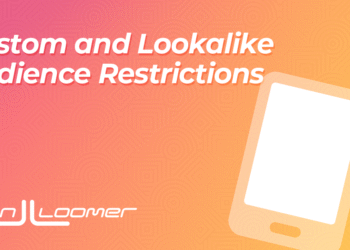
Not all Pins are created equal. Your choice of Pinterest Pin formats can make or break your results on Pinterest.
Here’s something most creators don’t realize: while everyone’s debating whether to use Video Pins or Static Pins, the most successful Pinterest marketers are strategically using both formats for different purposes. They understand that each format serves a unique role in their overall content strategy.
According to Tailwind’s 2025 research analyzing over 1 million Pins, 89% of the most viral Pins were Image Pins (Static Pins), but that doesn’t mean you should ignore Video Pins entirely. Video Pins made up 8% of top performers, and there’s a major opportunity in understanding when each format works best.
The key isn’t choosing one format and sticking with it forever — it’s understanding when and why to use each format to maximize your reach and achieve your specific goals.
Understanding the Different Pinterest Pin Formats
Let’s break down what makes each Pinterest content format unique and when they work best.
Static Pins
Static Pins are your classic Pinterest format: a single image with a title and description that links directly to your website or blog. Think of them as your digital billboards that can drive traffic for years.
These are perfect for quick inspiration hits, product showcases, and evergreen traffic generation. When someone searches “minimalist bedroom ideas” in 2027, your Static Pin from today could still be the first thing they see and click on.
Static Pins excel at SEO because Pinterest can easily read and categorize them. They’re also the easiest format to create consistently, which matters when Pinterest recommends publishing 5-25 Fresh Pins daily.

Video Pins
Video Pins are short-form or long-form videos that autoplay as users scroll through their feeds. They’re your chance to show rather than just tell.
These work brilliantly for tutorials, product demonstrations, before-and-after transformations, or any content where motion adds value. A Video Pin showing someone actually organizing their closet will always be more compelling than a static photo of an organized closet.

Video Pins have serious stopping power in feeds because movement naturally catches the eye. They’re particularly effective for younger audiences who are used to video-first platforms.
Pros and Cons of Each Format
Understanding the trade-offs of each Pinterest marketing strategy helps you make smarter format decisions.
Static Pins
Pros:
- Easiest to create consistently with tools like Tailwind Create or SmartPin
- SEO powerhouses that can rank in Pinterest search for years
- Direct traffic drivers with clickable links to your website
- Long lifespan – Tailwind research shows Pins can drive engagement for years
Cons:
- Lower stopping power in busy feeds compared to motion-based content
- Harder to show processes or transformations effectively
- Can blend together if you’re not strategic about design variety
Video Pins
Pros:
- High stopping power – motion naturally draws attention in feeds
- Perfect for demonstrations showing products or processes in action
- Great engagement rates when done well
- Versatile length options from quick 6-second clips to longer educational content
Cons:
- More production time and technical skills required
- Captions essential since many users browse with sound off
- File size considerations can slow down creation workflow
- Shorter content lifespan compared to Static Pins
How to Choose the Right Pin Format for Your Goal
Your best Pinterest Pin type depends entirely on what you’re trying to achieve. Here’s how to match format to goal:
Drive Traffic to a Website or Blog → Static Pins + Occasional Video Pins
If your primary goal is driving website traffic, Static Pins should be your bread and butter. They link directly to your content, perform well in Pinterest search, and have the longest lifespan.
Add Video Pins strategically when you have content that benefits from motion — like showing a recipe technique or demonstrating a product in use. But keep Static Pins as your main traffic driver.
Increase Saves & Follows → Video Pins + Engaging Content
For growing your Pinterest presence and building a following, Video Pins can be incredibly effective. They stop the scroll, encourage saves for later viewing, and help people remember your brand.
Focus on educational or entertaining video content that provides genuine value. Think quick tips, satisfying transformations, or sneak peeks behind the scenes.
Build Brand Authority → Mix All Three Formats Strategically
For establishing yourself as an expert in your niche, use a strategic mix. Start conversations with engaging Video Pins, provide deep value with educational content, and drive traffic with optimized Static Pins.
The key is consistency in your messaging and visual branding across all formats.
Best Practices for Each Pinterest Pin Format
Let’s dive into the Pinterest engagement tips that actually move the needle for each format.
Static Pins
- Stick to the 2:3 aspect ratio (1000×1500 pixels) for optimal Pinterest display. Tailwind’s research confirms that vertical images dominate viral content.
- Bold headlines work – your text overlay should be readable at thumbnail size and communicate clear value. “5-Minute Breakfast Ideas” beats “Morning Food Thoughts” every time.
- Include clear CTAs like “Get the recipe,” “Shop now,” or “Read more.” Don’t make people guess what happens when they click.
- Use high-contrast colors – 87% of viral Pins use white, near-white, or light gray as dominant colors. This doesn’t mean your Pins should be boring, but significant light space helps readability.
Video Pins
- Keep them short and punchy – 6-15 seconds tends to perform best. You need to hook viewers in the first three seconds before they scroll past.
- Add captions or text overlays because many users browse Pinterest with sound off. Your video should make sense without audio.
- A strong opening hook is crucial. Start with the end result, an intriguing question, or a bold statement that makes people want to keep watching.
- Vertical format wins – just like Static Pins, vertical videos (2:3 aspect ratio or taller) get better distribution than square or horizontal videos.

Carousel Pins (and multi-slide inspiration)
Many successful creators now create multi-slide Static Pins with numbered tips or step-by-step visuals.
- Compelling cover slides determine whether people engage with your content. Make it clear what value they’ll get from viewing all slides.
- Clear value on each slide – don’t waste slides on filler content. Each slide should provide a specific tip, step, or insight.
- Consistent visual branding across slides helps people recognize your content and builds brand awareness.
Using Multiple Pin Formats Together
The smartest Pinterest marketing strategy isn’t picking one format — it’s orchestrating multiple formats to work together.
Here’s a strategy that works: Start broad, then funnel down. Create a Video Pin that showcases your expertise and generates Saves and Follows. Follow up with Static Pins that target specific keywords and drive website traffic. This approach captures people at different stages of interest.
Example sequence: Video Pin showing “3 Kitchen Organization Mistakes Everyone Makes” → Static Pin targeting “kitchen organization ideas” → Static Pin targeting “small kitchen storage solutions” → Static Pin targeting “kitchen pantry organization.”
Each Pin serves a different purpose but reinforces your expertise in kitchen organization. The Video Pin builds brand awareness, while the Static Pins capture different search intents and drive traffic.
Tracking Pin Format Performance
Your Pinterest Analytics dashboard is your crystal ball for understanding which formats work best for your audience and goals.
Focus on the right metrics for each format. For Static Pins, prioritize outbound clicks since these drive website traffic. For Video Pins, look at video views and saves since these indicate engagement and brand building.
Compare apples to apples. Don’t compare a Video Pin’s performance directly to a Static Pin’s performance because they serve different purposes. Instead, compare Video Pins to other Video Pins and look for patterns in what works.
Give formats time to perform. Pinterest can take 2-4 weeks to fully evaluate and distribute new content. Don’t abandon a format after one week of testing.
Look for format-specific insights. Maybe your audience loves your Video Pins about quick tips but prefers Static Pins for detailed tutorials. These insights should guide your content planning.
Test systematically. Try the same content in different formats and see which drives better results for your specific goals. This gives you data-driven insights rather than guesses.

The post Video Pins vs Static Pins: How to Choose the Right Format appeared first on Tailwind Blog.















